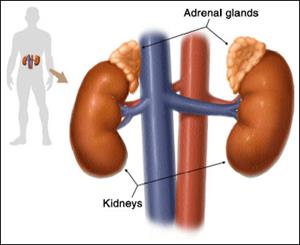23 Aug Benign Doesn’t Always Mean Harmless
Non-functional adrenal tumors, type 2 diabetes linked
When it comes to strange lumps and bumps, hearing a physician say the word “benign” is generally a blissful sound. However, benign doesn’t always mean harmless. New research suggests that for patients with certain benign tumors, the risks may be significant.
According to a press release issued by the Brigham and Women’s Hospital, a new study found that certain types of benign adrenal tumors known as “non-functional” may increase a patient’s risk for type 2 diabetes. These findings challenge the current belief that non-functional adrenal tumors pose no health threats.

Adrenal glands are located on the top of each kidney and play a key role in the body’s endocrine system, which controls hormone production. When benign adrenal tumors develop, it’s important to determine whether they’re functional (producing hormones) or non-functional (not producing hormones).
According to the press release, functional adrenal tumors that secrete hormones like cortisol can increase a patient’s risk for cardiovascular or metabolic diseases. Non-functional adrenal tumors that secrete little to no hormones are generally considered without risk and left untreated.
To conduct the study, researchers from Brigham and Women’s Hospital looked at the medical records of 1,479 patients, 242 of whom had non-functional adrenal tumors and 1,237 of whom had no adrenal tumors.
“When we analyzed our results, we were quite surprised,” says lead author Anand Vaidya, MD, MMSc, in the press release. “Our results indicated that patients with non-functional adrenal tumors developed diabetes twice as often as patients without any adrenal tumors.”
More than 29 million people in the US have diabetes, according to the Centers for Disease Control and Prevention (CDC). Diabetes increases a patient’s risk for many serious health problems and complications, including vision loss, heart disease, kidney failure and stroke.
Dr. Vaidya hopes to continue her research and discover the most effective way to treat non-functional adrenal tumors. Future studies will focus on whether surgical or pharmaceutical treatments could reduce the risk of diabetes.
“Our results imply that once you have an adrenal tumor, regardless of its functionality, you should consider recognizing it as a potential risk factor for diabetes,” concludes Dr. Vaidya in the press release.
The full study was published in the Annals of Internal Medicine. It was funded in part by the National Institutes of Health (NIH) and the Doris Duke Charitable Foundation. Co-researcher Dr. Turchin reports personal fees from Novo Nordisk and Monarch Medical Technologies, as well as grants from Sanofi and Merck outside the submitted work.


